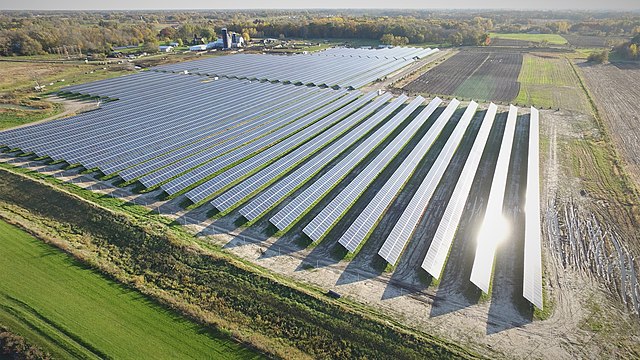
The U.S. Must Counterbalance China in the Renewable Energy Market
With unprecedented wildfires in the American West and record heat waves and severe flooding in China and Europe, more countries have begun to see the climate crisis as an evolving threat that demands necessary action. China and the U.S, as two of the largest carbon-emitting countries, responsible for 28 and 15 percent of global emissions respectively in 2020, must take on leadership roles in clean energy. China is presently the world’s largest producer of wind and solar energy, as well as the largest domestic and external investor in clean energy. The U.S. must ramp up its capabilities to remain a viable renewable energy competitor. China is currently the leading producer of both wind and solar renewable energy as it controls approximately 80% of the world’s solar supply chain and has the highest cumulative wind power capacity globally as of 2020. Where China contributed 38.5% to the world’s wind power capacity, the U.S. comparatively contributed 16.1%. While the U.S. took more of a backseat approach to investment in renewable energy under the Trump administration, the Chinese government placed a greater priority on clean energy development as it enabled the country to address other issues such air and water pollution and socio-economic instability. In 2019, renewable sources (hydropower, solar, wind, geothermal, bioenergy, wave and tidal) contributed to 8.71% of primary energy in the United States and 12.6% of primary energy in China. It is time for the U.S. to close this gap.
Reducing Dependency on China’s Renewable Energy Supply Chains
In a joint statement in April of this year, the U.S. special envoy for climate, John Kerry, and his Chinese counterpart, Xie Zhenhua, expressed urgency for the U.S. and China to cooperate in climate action. Although cooperation is important, the representatives in the Biden administration also recognize the value in reducing dependency on China and advocate for the U.S. take a more active leadership role in renewable energy supply chains mainly dominated by China. Secretary of State Antony Blinken supported this perspective, saying, “It’s difficult to imagine the United States winning the long-term strategic competition with China if we cannot lead the renewable energy revolution.”
The U.S. should leverage the contention in the U.S-Sino relationship for productive competition to achieve climate change advancements and challenge China as the top provider of clean energy supply chains. By taking on a greater leadership role, the U.S. can better ensure that clean energy supply chains align closer with core American values and take a stand against Chinese clean energy tied to grave human rights violations including forced labor. The U.S. has imposed a ban on the main company in Xinjiang, China producing polysilicon, an essential material in most solar panels, due to concerns over the use of forced labor. Most recently, the Senate was moved to implement more concrete action, passing a bill that bans all products from Xinjiang. However, key US allies like the UK and EU countries have not joined in the ban, and without their support, the U.S. does not hold enough of the market share to make a significant impact. The best competition strategy would be for the U.S. to develop a polysilicon supply chain outside of China.
Scaling Up Renewable Energy Outside of China
Many argue that the best way to compete with China is to invest in developing American domestic capacity. The Senate’s recent passage of the Innovation and Competition Act of 2021 to compete with China in key areas of research and development is a good first step in developing domestic clean energy capacity. Additionally, the ban against Xinjiang polysilicon benefits domestic solar manufacturers who do not use polysilicon in their panels like First Solar. The company plans to double U.S production and open a third plant in Ohio by mid-2023.
Even this boost in domestic capacity, however, will not be enough to compete with China. The U.S. should have an even greater focus on financing clean energy projects around the world in order to set an example for other countries to follow and strengthen global clean energy partnerships. The U.S. can invest in alternate polysilicon supply chains in South Asia. The South Korean company OCI announced plans in March to invest $55 million to expand polysilicon production at its Malaysian manufacturing facility from 30,000 to 35,000 metric tons. BloombergNEF estimated that it takes $15 million to build a thousand tons of polysilicon capacity. The U.S. can drive a public-private partnership to develop polysilicon capacity and strategically invest in OCI and partner supply chains to scale up global solar and renewable energy capacity outside of China. The U.S. International Development Finance Corporation (DFC) has committed to mobilizing investments in the renewable energy sector. The DFC can further be tasked to identify projects in allied and partner nations to create new sustainable mining and processing operations for renewable energy materials like polysilicon.
The U.S. is the country best equipped to drive financing to act as a counterweight to China’s overwhelming influence in the clean energy market and needs to act now to drive both public and private investments in renewable energy supply chains. As we move into a post-pandemic reality, we cannot miss this crucial opportunity to assert greater influence in the renewable energy sector and the fight against climate change.





